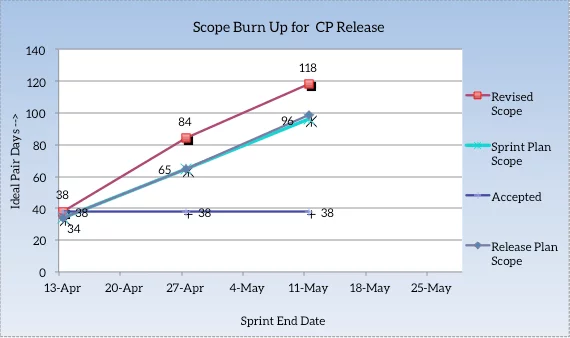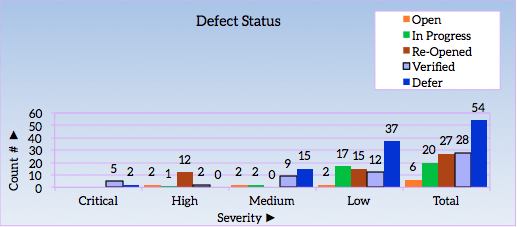Use Metrics to Tell a Story
Agile delivery practices use metrics as a foundation to quantify the unpredictable nature of understanding what someone has in mind. Stories are a set of words that convey an idea and translate one person’s imagination into an imaginary format called software. Given that we can debate what the definition of “is” is, estimating when some body of work will be done and how far we are in that body of work approaches impossible. However, all Delivery Managers are asked to do exactly that. End of Sprint reports are used to convey to the rest of the business where we are on an imaginary journey and when we will get there.
The Release burn up helps to describe how well the teams are able to complete the work planned for this release. In this team we can see that although the team is tracking to complete the scope originally planned in the release. Scope was added to the plan either by better understanding or changes in definition and the team is not able to complete the growth in scope. Also in this chart we see that the Product Owner is not accepting the scope. This could increase the risk of an on time delivery.

The bug chart helps to give some understanding of the quality of the work. It is important to report all of the defects in the code base. Deciding what to do about the defects is a subject for another blog.

Finally we want to report something about what is happening with the scope. The scope chart below just gives a snapshot in time of how things are going and what areas need focus. The chart shows that the scope is actively being managed but investment decisions may be affected by the discovered scope in one or more features.

The most important part of any report is not the numbers gathered but the narrative that goes along with the numbers. The story of this release so far is that scope has been found or added that the team cannot achieve but they are tracking to make plan. The defects are being well managed and do not appear to cause alarm. Scope is being managed but higher-level decisions need to be made. The View Report feature is not anywhere close to the high level estimate and will impact the team’s ability to take on other work. The team needs help to prioritize whether they should continue with this feature or look for other solutions.
What story is your status report telling?
